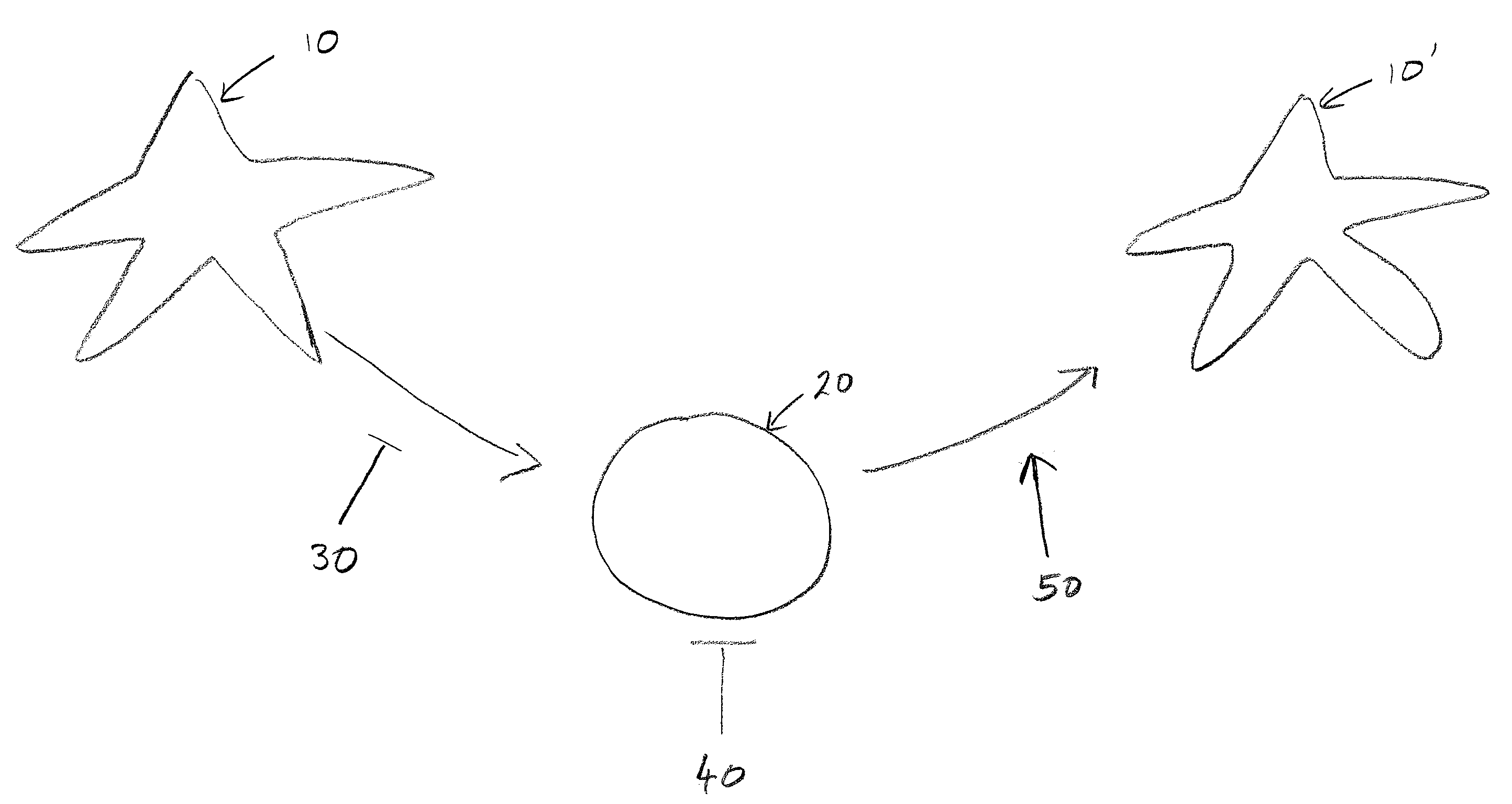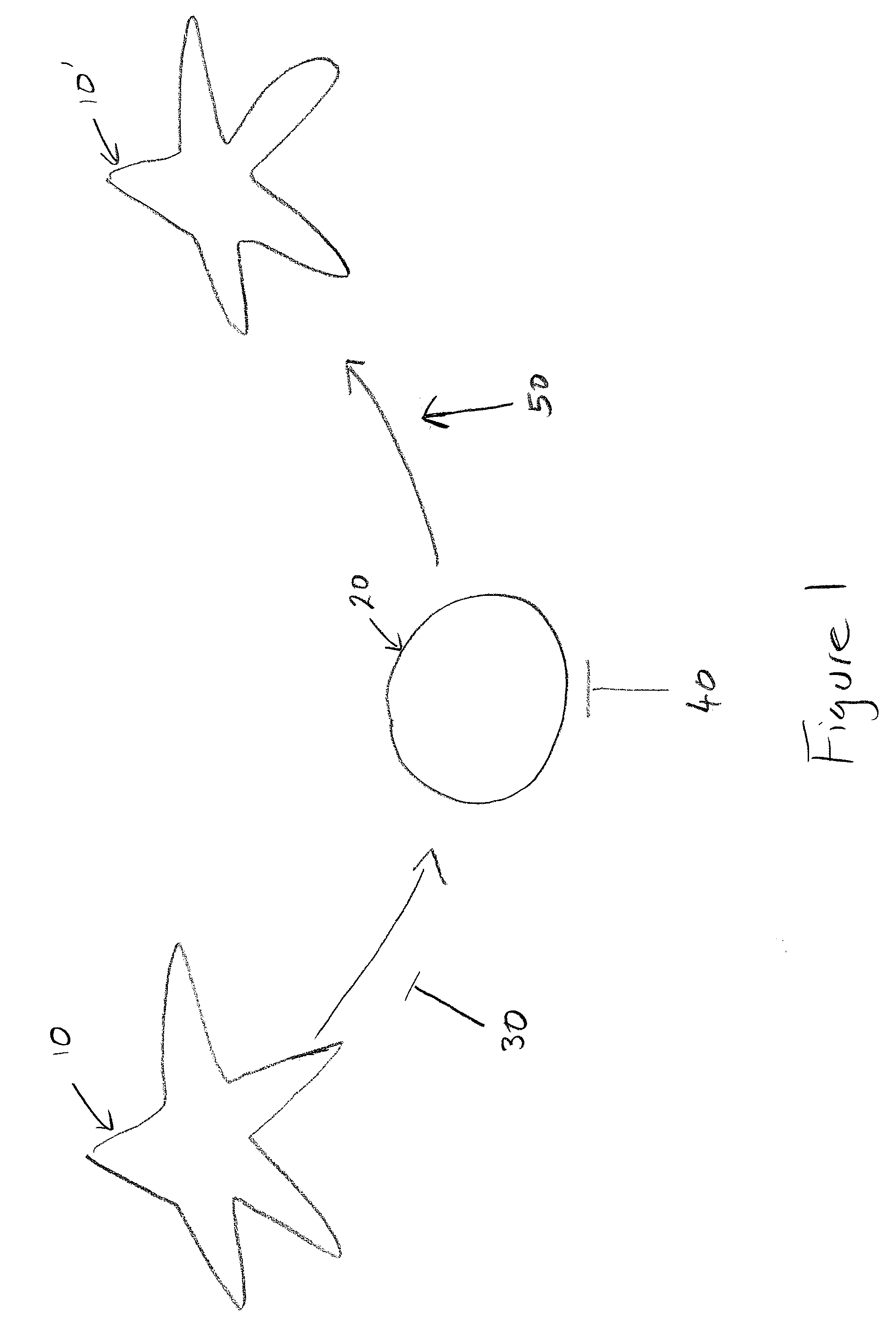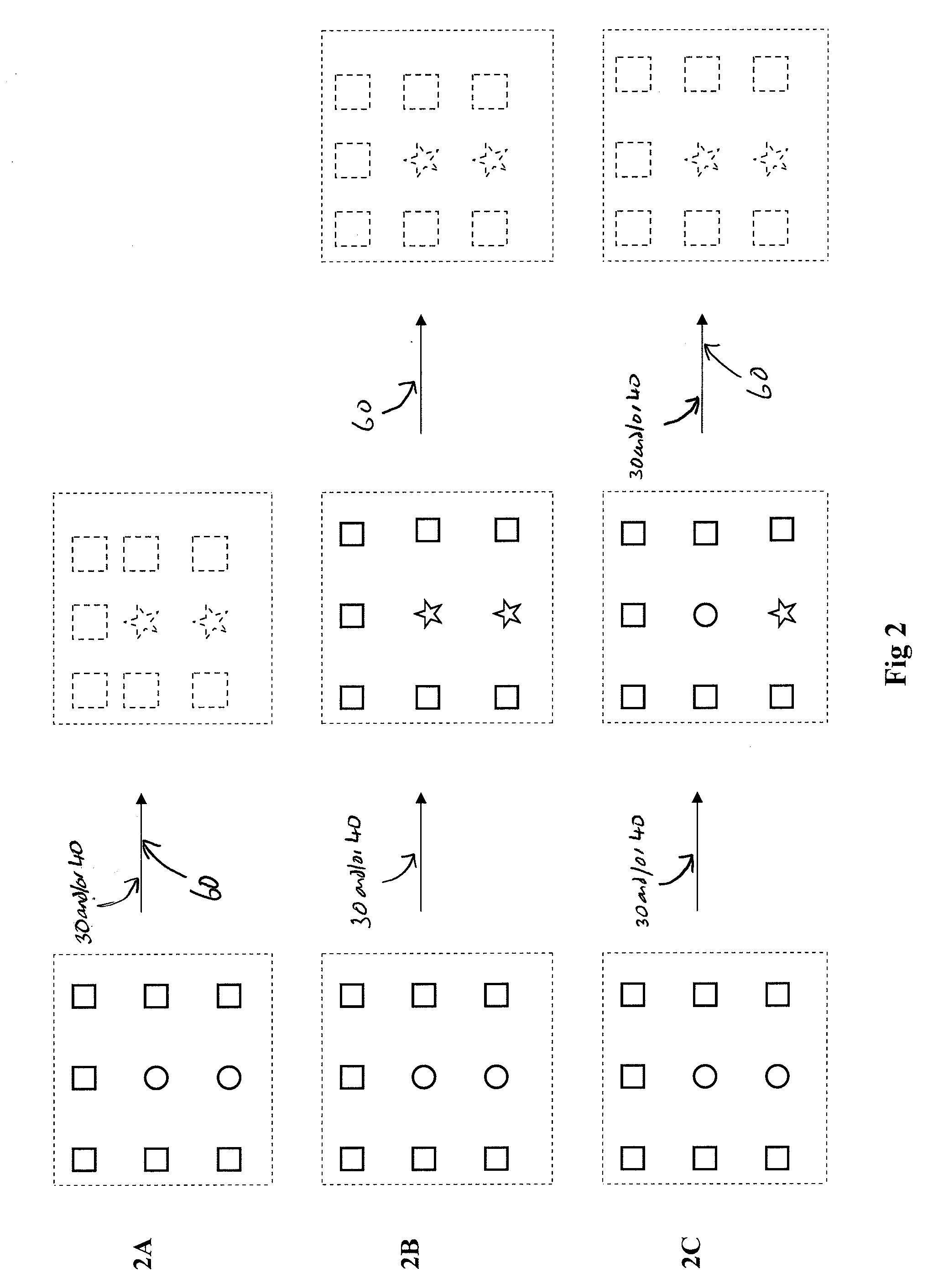Methods and Compositions for Reducing Stemness in Oncogenesis
a stem cell and composition technology, applied in the field of cell biology, molecular biology and oncology, can solve the problems of potentially and achieve the effect of reducing the number of cancer stem cells and more aggressive and/or resistant cancer cells
- Summary
- Abstract
- Description
- Claims
- Application Information
AI Technical Summary
Benefits of technology
Problems solved by technology
Method used
Image
Examples
example 1
System for Confirming the Activity of Stemness-Reducing Agents
[0160]This example describes an assay for identifying and validating inhibitors of Oct4, Sox2, Klf4, Nanog, c-Myc, Klf5, Klf2, ESRRB, REST, TBX3, Foxc1, Foxc2, Goosecoid, Sip1, Snail1, Snail2, Tcf3 and Twist for their ability to reduce sternness in human embryonic stem cells. Human embryonic stem cells express specific markers, including the cell surface markers SSEA-3 and SSEA-4 that correlate highly with their stemness, i.e., undifferentiated state (Draper et al., J. ANAT. 200:249-258, 2002). In vitro immunostaining assays can be used to measure the ability of cells to maintain sternness after treatment with inhibitors of Oct3 / 4, Sox2, Klf4, Nanog, Tbx3, ESRRB, REST, Snail, Twist, Slug, SIP1, FoxC1, FoxC2, goosecoid and TCF3.
[0161]Briefly, human embryonic stem cells, available from the National Stem Cell Bank (Madison, Wis.), are cultured in media and under conditions known in the art and are then exposed to the inhibit...
example 2
Epithelial-Mesenchymal Transition (EMT) Model
[0163]This example describes an assay for identifying and validating inhibitors of Oct4, Sox2, Klf4, Nanog, c-Myc, Klf5, Klf2, ESRRB, REST, TBX3, Foxc1, Foxc2, Goosecoid, Sip1, Snail1, Snail2, Tcf3 and Twist for their ability to reduce sternness in stem cells created by the induction of the epithelial-mesenchymal transition (EMT).
[0164]Cells that have undergone EMT have properties of stem cells including the ability to form mammospheres, tumors in immunocompromized mice and the expression of epithelial stem cell markers including N-cadherin and vimentin (Mani et al., CELL 133:704, 2008). The following in vitro immunostaining assay can be used to measure the ability of cells to undergo EMT, and / or maintain the EMT phenotype, after treatment with inhibitors of Oct3 / 4, Sox2, Klf4, Nanog, Tbx3, ESRRB, REST, Snail, Twist, Slug, SIP1, FoxC1, FoxC2, goosecoid and TCF3.
[0165]Briefly, cultured human mammary epithelial (HMLE) cells are exposed to E...
example 3
BPLER Model
[0168]This example describes a method for reducing or eliminating cancer stem cells in vitro / ex-vivo using inhibitors of any one of, or a combination of, the transcription factors Oct4, Sox2, Klf4, Nanog, c-Myc, Klf5, Klf2, ESRRB, REST, TBX3, Foxc1, Foxc2, Goosecoid, Sip1, Snail1, Snail2, Tcf3 and Twist.
[0169]In a mixed population of stem-like and differentiated cells, cancer initiating potential correlates with the number of cancer stem cells. A robust cell line for evaluating the efficacy of stemness reducing agents is the human breast tissue-derived BPLER cell, which possesses relatively high cancer-initiating potential (Tan et al., CANCER CELL 12:160, 2007). BPLER cells are treated with inhibitors of any one, or a combination of, the transcription factors Oct4, Sox2, Klf4, Nanog, c-Myc, Klf5, Klf2, ESRRB, REST, TBX3, Foxc1, Foxc2, Goosecoid, Sip1, Snail1, Snail2, Tcf3 and Twist using treatment methods well known in the art and dependent on the physical properties of t...
PUM
| Property | Measurement | Unit |
|---|---|---|
| Cell death | aaaaa | aaaaa |
| Surface | aaaaa | aaaaa |
Abstract
Description
Claims
Application Information
 Login to View More
Login to View More - R&D
- Intellectual Property
- Life Sciences
- Materials
- Tech Scout
- Unparalleled Data Quality
- Higher Quality Content
- 60% Fewer Hallucinations
Browse by: Latest US Patents, China's latest patents, Technical Efficacy Thesaurus, Application Domain, Technology Topic, Popular Technical Reports.
© 2025 PatSnap. All rights reserved.Legal|Privacy policy|Modern Slavery Act Transparency Statement|Sitemap|About US| Contact US: help@patsnap.com



